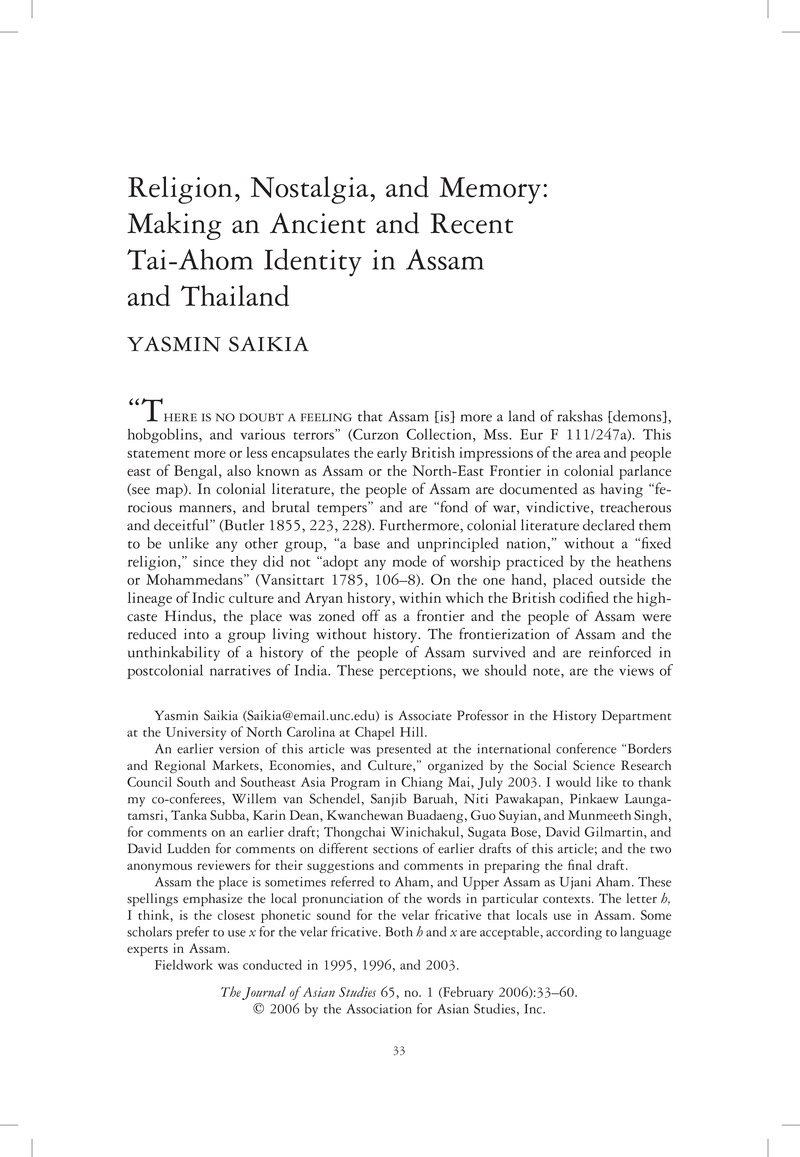Crossref Citations
This article has been cited by the following publications. This list is generated based on data provided by Crossref.
Phukan, Khammoun
2020.
CONSTRUCTING ETHNIC IDENTITY IN RAJANIKANTA BARDOLOI’S MIRI JIYORI: A (POST) COLONIAL UNDERSTANDING OF THE TEXT.
Humanities & Social Sciences Reviews,
Vol. 8,
Issue. 4,
p.
657.
Sengupta, Madhumita
and
Bharadwaj, Jahnu
2021.
Caste census and the impact of colonial sociology in British Assam.
Asian Ethnicity,
Vol. 22,
Issue. 4,
p.
516.
Hari, Amrita
and
Nagpal, Sugandha
2022.
The National Register of Citizens (NRC) in India and the potential for statelessness in situ: a cautionary tale from Assam.
Contemporary South Asia,
Vol. 30,
Issue. 2,
p.
194.
Joshi, Vibha
2023.
Book review: Jelle J. P. Wouters (Ed.), Vernacular Politics in Northeast India: Democracy, Ethnicity, and Indigeneity.
Journal of South Asian Development,
Vol. 18,
Issue. 2,
p.
329.
Hazarika, Dibyanjoly
and
Ghosh, Tanvhi
2023.
Science, racism, and nature in India's upper Assam's British tea empire.
Asian Journal of Social Science,
Vol. 51,
Issue. 4,
p.
237.





